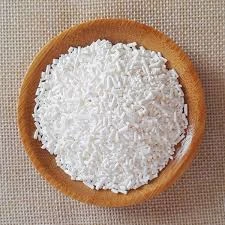
Enhancing Taste with E635 Flavor Booster for Culinary Creations
The Role of E635 as a Flavour Enhancer
The quest for enhancing the flavors of food has been a part of culinary practices for centuries. With the evolution of food technology, various additives have been introduced to enrich taste and improve the overall sensory experience of meals. Among these additives, E635, a flavor enhancer, has garnered considerable attention. It is often found in processed foods, contributing to the savory taste that many people find appealing. This article will delve into what E635 is, its chemical composition, uses, and the potential health implications associated with its consumption.
The Role of E635 as a Flavour Enhancer
The chemical composition of E635 contributes to its functionality as a flavor enhancer. It consists of a mix of disodium guanylate (E627) and disodium inosinate (E631), which are both responsible for the enhancement of the umami taste. The interaction between these compounds and other food constituents elevates the overall flavor, enabling manufacturers to reduce the amount of salt used without sacrificing taste. This characteristic can lead to lower sodium levels in products, which has implications for public health concerning hypertension and cardiovascular diseases.
e635 flavour enhancer

In the food industry, E635 is commonly utilized in various products, particularly in processed foods that require an intensive flavor boost. It is prevalent in items like instant noodles, potato chips, and frozen meals, where it helps achieve a desired taste that appeals to consumers. Its ability to enhance flavor allows manufacturers to create products that stand out in a competitive market, providing an edge over their rivals.
However, while E635 contributes positively to flavor enhancement, concerns about its health implications have emerged. Some individuals may experience sensitivities or adverse reactions to additives like E635, particularly if consumed in large quantities. Symptoms can include headaches, digestive issues, or allergic reactions—a phenomenon often referred to as Chinese restaurant syndrome, historically associated with MSG. Although scientific studies have generally deemed E635 safe for consumption within established regulatory limits, it is vital for consumers to be aware of their dietary choices.
Regulatory bodies, such as the European Food Safety Authority (EFSA) and the U.S. Food and Drug Administration (FDA), monitor food additives, including E635, to ensure their safety in food products. E635 has been approved for use in many countries, provided that it meets specific guidelines concerning its concentration and utilization in food manufacturing. As with any additive, moderation is key, and consumers should strive for a balanced diet that minimizes reliance on processed foods high in flavor enhancers.
In conclusion, E635 plays a significant role as a flavor enhancer in the food industry, contributing to improved taste and enjoyment of various products. Its chemical makeup, primarily through sodium ribonucleotides, allows for an enhanced umami flavor profile that appeals to the modern palate. While it offers benefits in flavor enhancement, consumers should remain aware of potential sensitivity issues and the importance of balancing their diets. As our understanding of food additives continues to evolve, making informed choices will remain crucial for maintaining both flavor satisfaction and overall health.
-
Pure Sodium Dichloroisocyanurate Dihydrate | Powerful DisinfectantNewsAug.29,2025
-
Industrial Chemicals: Quality & Purity for Every IndustryNewsAug.28,2025
-
Nitrile Rubber Honoring Strict Production StandardsNewsAug.22,2025
-
Aspartame Ingredients Honoring Food Safety ValuesNewsAug.22,2025
-
Fertilizer for Balanced Plant NutritionNewsAug.22,2025
-
Cyanide Gold Processing with High Purity AdditivesNewsAug.22,2025
-
Formic Acid in Textile Dyeing ApplicationsNewsAug.22,2025
Hebei Tenger Chemical Technology Co., Ltd. focuses on the chemical industry and is committed to the export service of chemical raw materials.
-

view more DiethanolisopropanolamineIn the ever-growing field of chemical solutions, diethanolisopropanolamine (DEIPA) stands out as a versatile and important compound. Due to its unique chemical structure and properties, DEIPA is of interest to various industries including construction, personal care, and agriculture. -

view more TriisopropanolamineTriisopropanolamine (TIPA) alkanol amine substance, is a kind of alcohol amine compound with amino and alcohol hydroxyl, and because of its molecules contains both amino and hydroxyl. -

view more Tetramethyl Thiuram DisulfideTetramethyl thiuram disulfide, also known as TMTD, is a white to light-yellow powder with a distinct sulfur-like odor. It is soluble in organic solvents such as benzene, acetone, and ethyl acetate, making it highly versatile for use in different formulations. TMTD is known for its excellent vulcanization acceleration properties, which makes it a key ingredient in the production of rubber products. Additionally, it acts as an effective fungicide and bactericide, making it valuable in agricultural applications. Its high purity and stability ensure consistent performance, making it a preferred choice for manufacturers across various industries.





